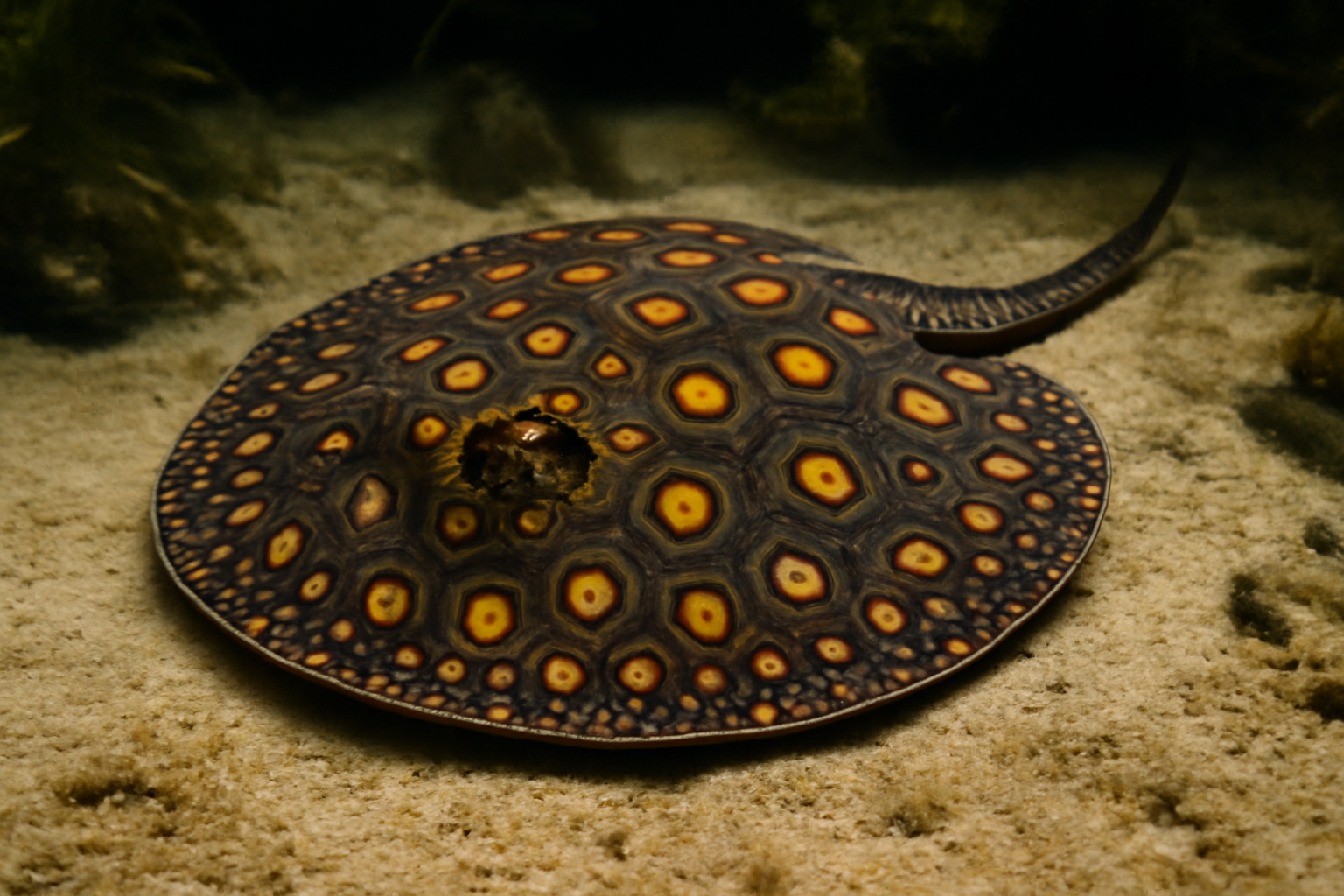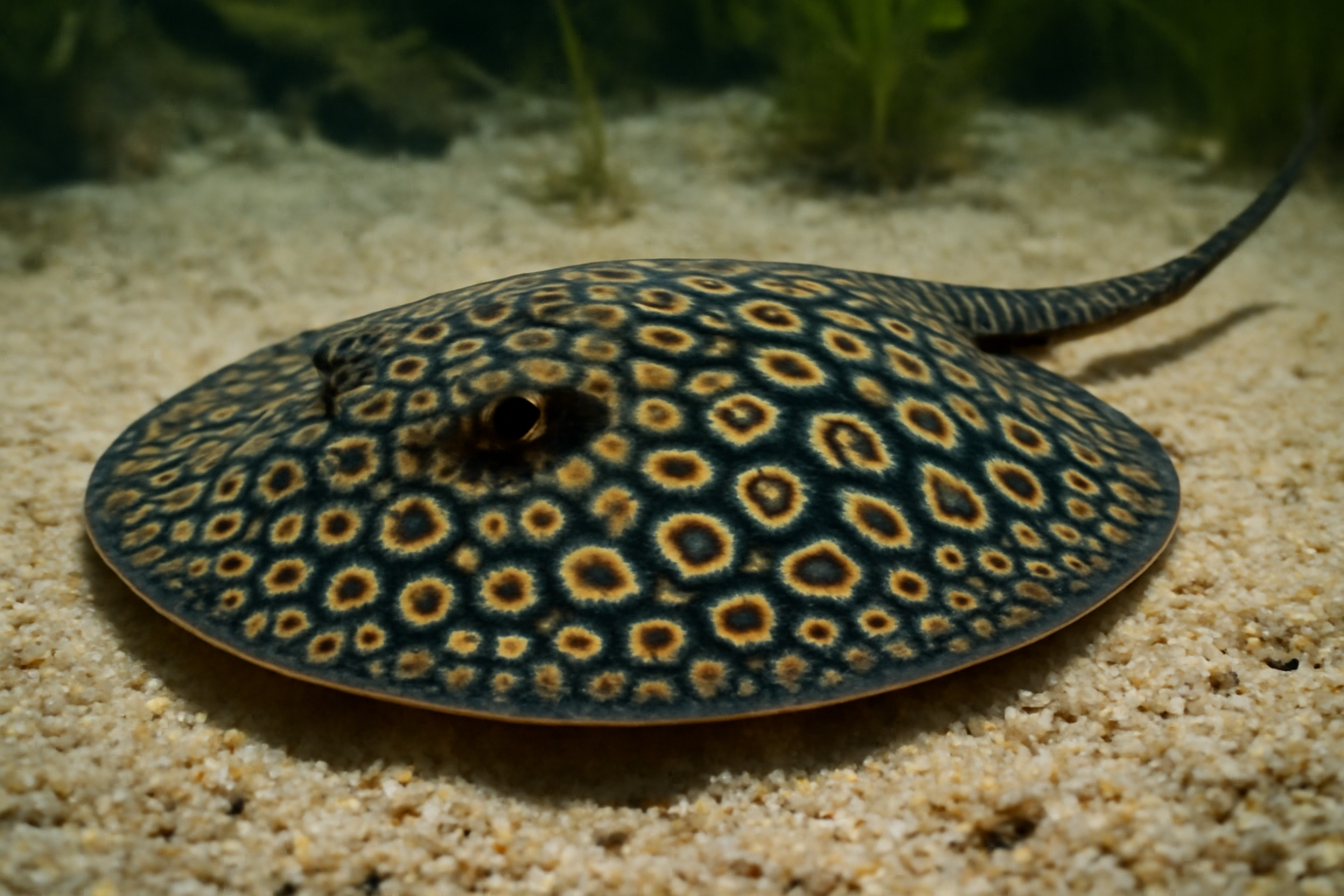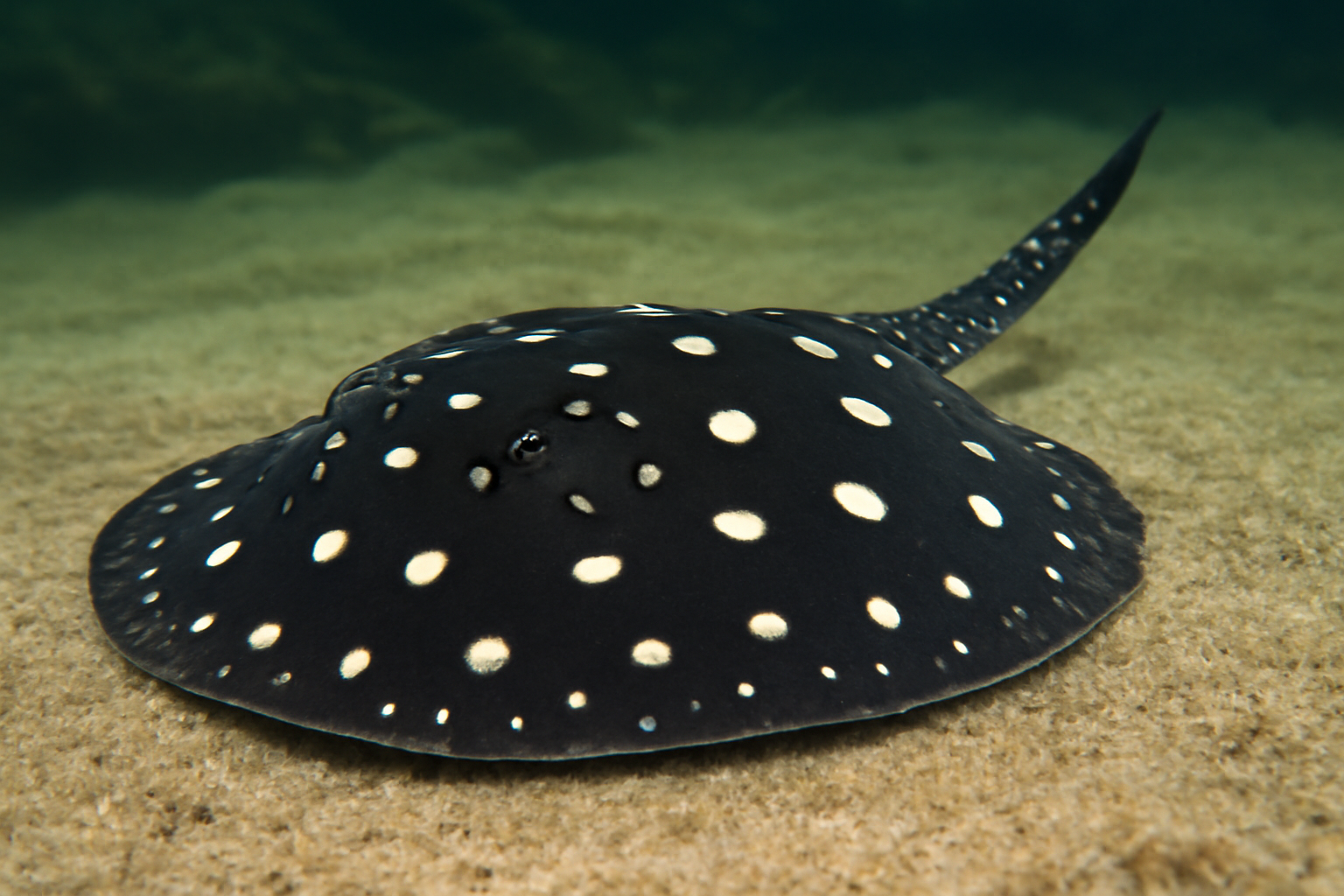River Stingrays [Potamotrygon]
Description
Potamotrygon is the largest and most diverse genus within the family Potamotrygonidae, native to the freshwater rivers and lakes of South America. These rays are distinguished by their fully adapted freshwater lifestyle, unlike most other rays, which are marine or brackish. They have rounded, disk-like bodies with long, slender tails equipped with one or more venomous spines. Their coloration and patterns are highly variable, often serving as camouflage against the sandy or muddy bottoms they inhabit. River stingrays feed on a variety of invertebrates and small fish, using electroreception to detect their prey. They are ovoviviparous, giving birth to live young that are independent from birth. The genus is known for its complex taxonomy, with numerous species that are often difficult to distinguish due to their cryptic appearances and overlapping ranges.
Species

Ocellate River Stingray [Potamotrygon ocellata]
View Details
Reticulated River Stingray [Potamotrygon reticulatus]
View Details
Black River Stingray [Potamotrygon schroederi]
View DetailsTaxonomy
| Phylum |
Chordates
Chordata
|
|---|---|
| Class |
Cartilaginous Fish
Chondrichthyes
|
| Order |
Stingrays
Myliobatiformes
|
| Family |
River Stingrays
Potamotrygonidae
|
Statistics
- Species 3